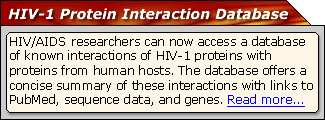| PubMed | Entrez | BLAST | OMIM | Books | Taxonomy | Structure |
The Reference Sequence (RefSeq) collection aims to provide a comprehensive, integrated, non-redundant set of sequences, including genomic DNA, transcript (RNA), and protein products, for major research organisms. RefSeq standards serve as the basis for medical, functional, and diversity studies; they provide a stable reference for gene identification and characterization, mutation analysis, expression studies, polymorphism discovery, and comparative analyses. RefSeqs are used as a reagent for the functional annotation of some genome sequencing projects, including those of human and mouse.

NCBI provides RefSeqs for taxonomically diverse organisms including eukaryotes, bacteria, and viruses. Additional records are added to the collection as data become publicly available.
The main features of the RefSeq collection include:
RefSeq is accessible via BLAST, Entrez, and the NCBI FTP site. Information is also available in Entrez Genomes and Entrez Gene (and LocusLink), and for some genomes additional information is available in the Map Viewer. Special properties have been defined to facilitate Entrez-based retrieval. Also see: Entrez Query Hints The NCBI handbook [Internet]. Bethesda (MD): National Library of Medicine (US), National Center for Biotechnology Information; 2002 Oct. Chapter 17, The Reference Sequence (RefSeq) Project. Available from http://ncbi.nlm.nih.gov/entrez/query.fcgi?db=Books
RefSeq and LocusLink: NCBI gene-centered resources.
Introducing RefSeq and LocusLink: curated human genome resources at the NCBI.
Complete genomes in WWW Entrez: data representation and analysis. |
|
Last updated September 24, 2004
 non-redundancy
non-redundancy
